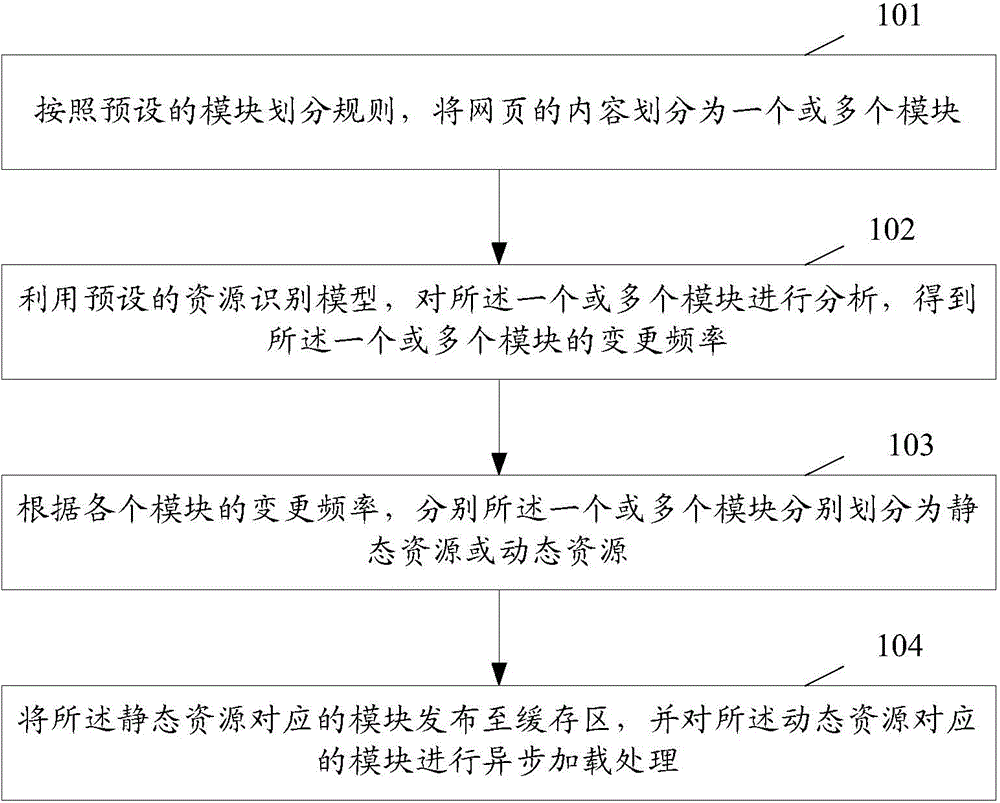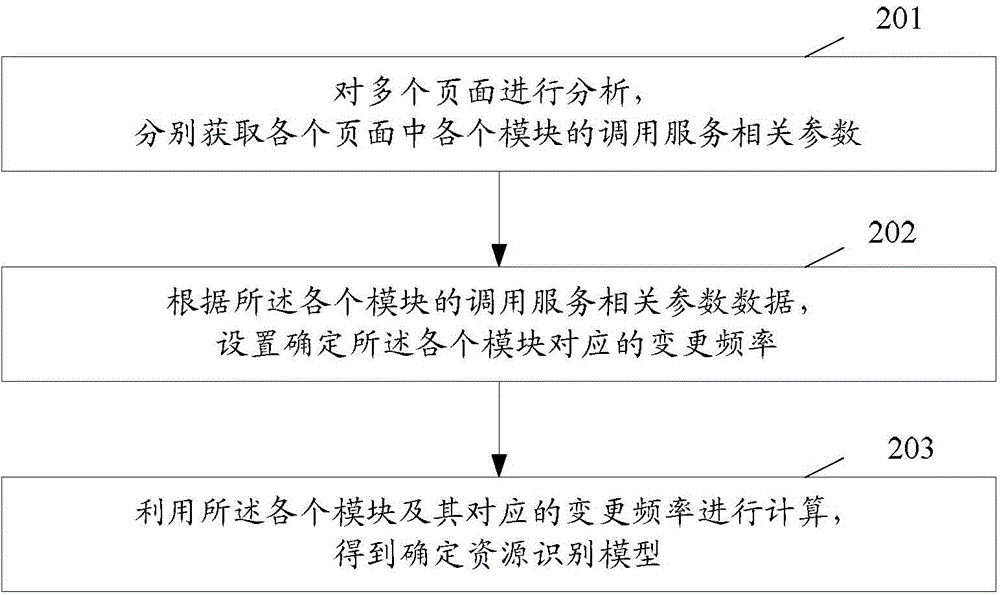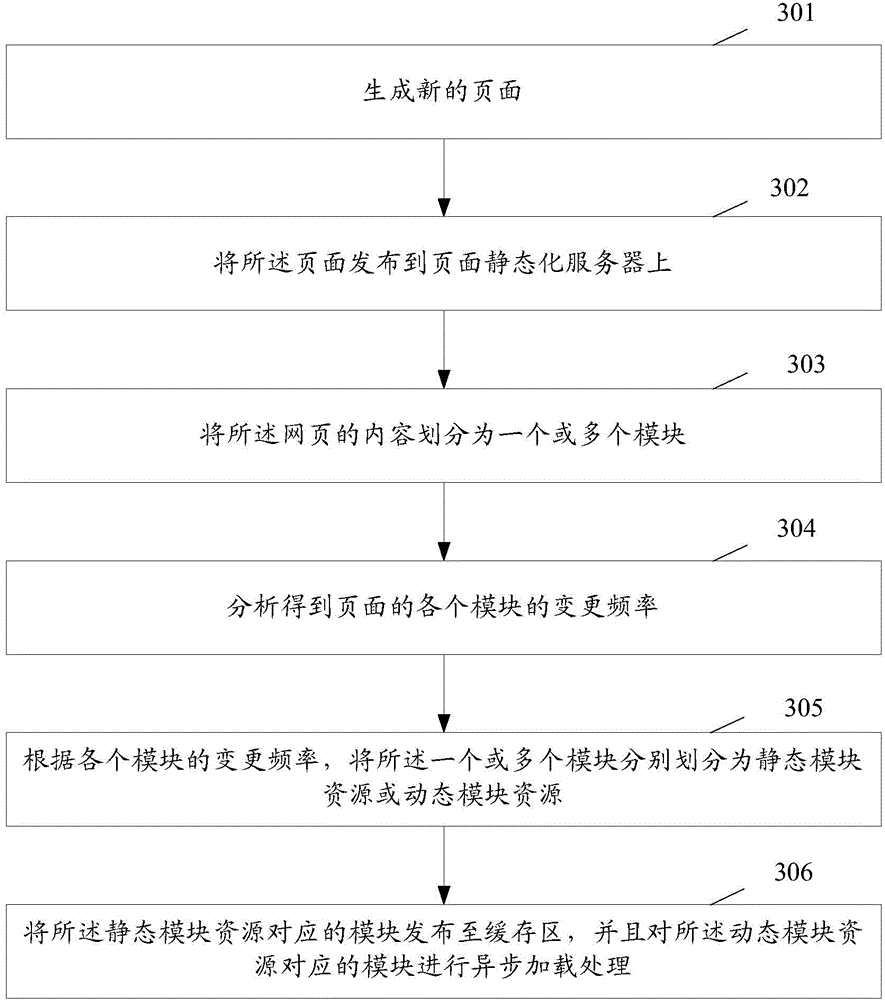Method and device for publishing webpage resources
A technology of web resources and resources, which is applied in the field of communication, can solve problems such as insufficient design of resource classification, poor user experience, resource differentiation and optimization, etc., and achieve the effects of saving reading time, improving user experience, and increasing speed
- Summary
- Abstract
- Description
- Claims
- Application Information
AI Technical Summary
Problems solved by technology
Method used
Image
Examples
Embodiment 1
[0045] The method for publishing webpage resources provided by the embodiment of the present invention, such as figure 1 shown, including:
[0046] Step 101: Divide the content of the web page into one or more modules according to preset module division rules.
[0047] Step 102: Using a preset resource identification model, analyze the one or more modules to obtain the change frequency of the one or more modules.
[0048] Step 103: According to the change frequency of each module, the one or more modules are respectively divided into static resources or dynamic resources.
[0049] Step 104: Publish the modules corresponding to the static resources to the cache area, and perform asynchronous loading processing on the modules corresponding to the dynamic resources.
[0050] Wherein, the module division rule is: according to the function design and code design corresponding to different areas in the current web page, divide the web page into multiple resources, for example, the...
Embodiment 2
[0082] A scenario where the embodiment of the present invention is adopted is: when the business department proposes a development requirement for a new page, the method for publishing web page resources in this embodiment, such as image 3 shown, including:
[0083] Step 301: The programmer generates a new page according to the needs of the business department.
[0084] Step 302: Publish the page to the page static server.
[0085] Step 303: The page static server divides the content of the webpage into one or more modules according to preset module division rules.
[0086] Step 304: The page static server uses a preset resource identification model to analyze and obtain the change frequency of each module of the page.
[0087] Step 305: Divide the one or more modules into static resources or dynamic resources according to the change frequency of each module.
[0088] Step 306: Publish the module corresponding to the static resource to the cache area, and perform asynchron...
Embodiment 3
[0090] A scenario of using the embodiment of the present invention is: after completing step 306 of the second embodiment above, when the manager needs to change any dynamic resource in the page to a static resource, that is, to change a part of the dynamic content in the page to static content, The method for publishing webpage resources in this embodiment, such as Figure 4 shown, including:
[0091] Step 401: The content of the first module in the page changes.
[0092] Here, the first module may be any module that changes in the page, and the initial state of the first module in this embodiment is a dynamic resource.
[0093] Step 402: Using a preset resource identification model, recalculate the change frequency of the first module.
[0094] Step 403: According to the change frequency, determine that the first module is changed to a static resource.
[0095] Step 404: Publish the first module to the cache.
PUM
 Login to View More
Login to View More Abstract
Description
Claims
Application Information
 Login to View More
Login to View More - R&D
- Intellectual Property
- Life Sciences
- Materials
- Tech Scout
- Unparalleled Data Quality
- Higher Quality Content
- 60% Fewer Hallucinations
Browse by: Latest US Patents, China's latest patents, Technical Efficacy Thesaurus, Application Domain, Technology Topic, Popular Technical Reports.
© 2025 PatSnap. All rights reserved.Legal|Privacy policy|Modern Slavery Act Transparency Statement|Sitemap|About US| Contact US: help@patsnap.com



